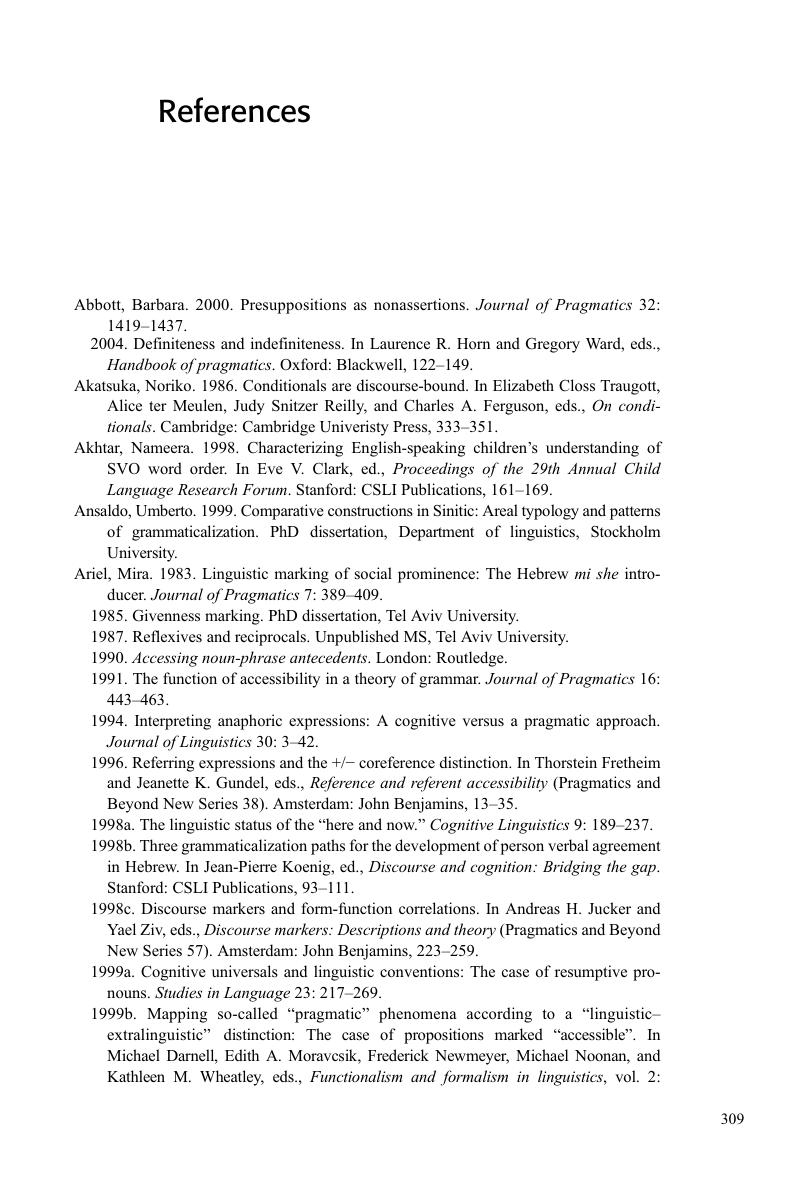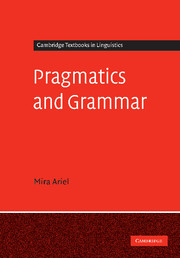Book contents
- Frontmatter
- Contents
- List of tables
- Preface
- Acknowledgments
- How to use this book
- Transcription conventions
- 1 Introduction: Grammar, pragmatics, and what's between them
- PART I Drawing the grammar/pragmatics divide
- PART II Crossing the extralinguistic/linguistic divide
- Part III Bringing grammar and pragmatics back together
- References
- Author index
- Subject index
- References
References
Published online by Cambridge University Press: 05 September 2012
- Frontmatter
- Contents
- List of tables
- Preface
- Acknowledgments
- How to use this book
- Transcription conventions
- 1 Introduction: Grammar, pragmatics, and what's between them
- PART I Drawing the grammar/pragmatics divide
- PART II Crossing the extralinguistic/linguistic divide
- Part III Bringing grammar and pragmatics back together
- References
- Author index
- Subject index
- References
Summary

- Type
- Chapter
- Information
- Pragmatics and Grammar , pp. 309 - 336Publisher: Cambridge University PressPrint publication year: 2008

